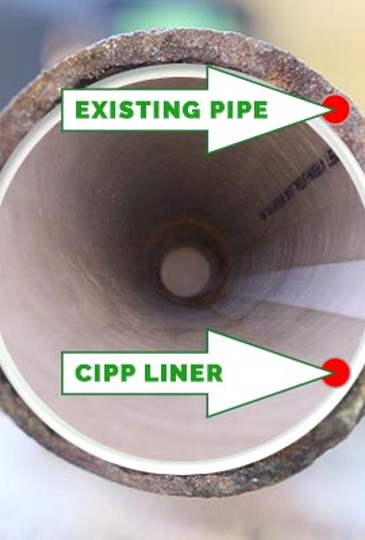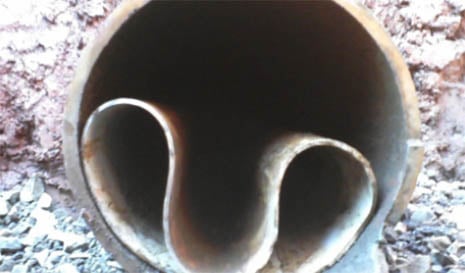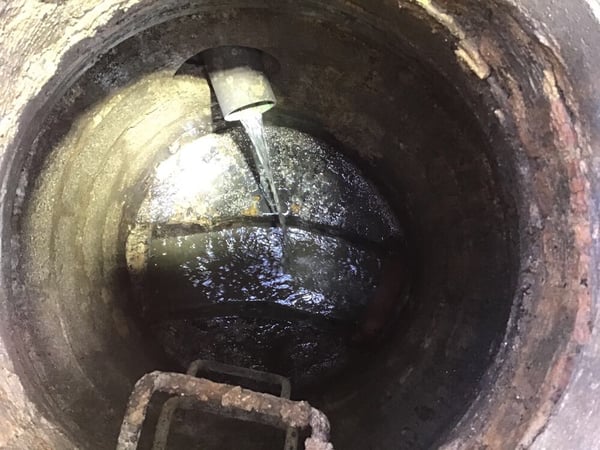(630) 682-4700
2655 Warrenville Road, Suite 225, Downers Grove, IL 60515
Better information about your collection, water, and stormwater systems
Explore ClarityBetter information about your collection, water, and stormwater systems
Explore Clarity
Mr. Matyja, an experienced project manager and design engineer, serves as the ...
So your engineering team has decided to use cure-in-place-pipe (CIPP) to prolong the useful life of the municipal pipelines, but what can the team do to ensure it's successful?
Because CIPP programs have become commonplace, it is becoming more prevalent to encounter CIPP lining failures on installations long before the end of their estimated life, oftentimes within the first year of installation. These failures are expensive, frustrating, and completely avoidable.
Understanding the current state of the CIPP market, including the different types of liner resins, the different installation and curing techniques are important in this ever-changing market. When best practices are incorporated into CIPP design and specification development, it ensures a more successful installation. In addition, the role of a construction observer helps assure that the specifications and proper procedures are followed.
Cured-in-place pipe (CIPP) is a lining methodology where a felt liner is filled with resin, inserted into an existing pipe, and cured inside the host pipe. CIPP lining has been used since the 1980s in mainline sewer collection systems to stop root intrusion, reduce infiltration, mitigate offset joints, and rejuvenate deteriorated pipe. Over the past 30 years, additional improvements to the process, including new resins, specialty liners for sewer laterals, and end seals have grown in popularity.

Cross section of pipe with CIPP Liner
Most CIPP installers still use the common rule of thumb that says, “if a pipe can be televised, it can be lined.” In many cases, this is accurate. However, a utility owner needs to be able to mitigate their expectations based on the condition of the host pipe. For instance, a pipe with a severe sag will still have a sag after a liner is installed. A severely cracked pipe may cause rippling in the CIPP liner.
Before undertaking a CIPP lining program, it is vital to have a plan in place to know where to line. A properly managed televising program will provide accurate videos and reporting, allowing engineers to make decisions on what can be lined, and where point repairs and protruding tap removals may be necessary before lining. In addition, it is important to verify active lateral connections, so that inactive connections (which are major infiltration contributors) are not reinstated. A lateral televising program can eliminate the many uncertainties unique to laterals, such as changing pipe diameters, cleanout locations, and bends.
The design of a liner is essential to its longevity and successful installation. Major elements to consider include:
Once a contractor has been selected, managing the details of the lining project is key. This includes making sure that the contractor is following all the specified requirements and proper construction techniques. Some common issues in poorly managed projects can include:

Sewer laterals are the little brother or sister to their mainline counterparts, but with all the same problems, and then some! Often laterals are not actually maintained, and in worse condition than mainline sewers. When lining laterals, several important considerations exist, but the most fundamental question is: “Who owns the lateral, the homeowner or the utility?” Even if the lateral is owned by the homeowner, many communities have successfully made the case to line private laterals using public funds due to the overall public good in eliminating infiltration. Laterals can be lined from the mainline, or from a cleanout in the lateral. There are many different types of liners; including connection lining and varying lengths along the lateral. It may be necessary to install a cleanout on the lateral, so some minimal excavation could be required. If so, rehabilitation plans should be adjusted accordingly.
Mainline and lateral lining using CIPP will be smoothly installed when using proper planning, design, and construction management. Knowing the keys to a successful lining program can help to ensure your project has maximized the pipeline’s life span and created lasting I/I results.


Mr. Matyja, an experienced project manager and design engineer, serves as the ...